Agriculture is one of the principal pillars of the Indian economy. Half of India’s workforce is employed in agriculture and related sectors. The Himalaya, running along northern and northeastern parts of the country represent its primary mountain range. Although the North East (NE) Indian Himalaya are famous for their stunning landscapes and rich biodiversity, the region faces numerous agricultural challenges that threaten environmental sustainability and food safety.
Freezing winters adversely affect the agricultural fields and decrease total crop yields. The fragile geology of the NE Himalayan region, characterized by steep slopes, heavy rainfall, and loose soil structure, makes it highly prone to soil erosion. The constant loss of fertile topsoil not only depletes nutrients but also disrupts agricultural activities, posing significant challenges to the farmers in the region. Moreover, the soils in NE India are predominantly acidic, presenting a significant challenge for sustainable agriculture. Research indicates that approximately 95% of the soils in this region fall within the acidic range (pH 5.0–6.0), limiting their fertility.
Traditional agricultural practice, known as shifting cultivation or ‘jhum’ cultivation is the primary and dominant mode of food production and economy in the hills of NE India. Local farmers depend on such primitive methods of agriculture that deplete the forest, water, and soil resources leading to deforestation, soil erosion, nutrient depletion, and loss of biodiversity over time, impacting long-term agricultural sustainability. Additionally, the unpredictable weather patterns of the region further exacerbate the challenges, making agriculture highly susceptible to climate variability. Erratic rainfall patterns in the Himalayan region driven by climate change result in irregular crop yields, threatening food security and livelihoods. Also, difficult terrain and inadequate infrastructure restrict the adoption of modern farming techniques and mechanized tools, making farming labor-intensive and less efficient, and as a result, the farming system faces numerous risks and uncertainties.
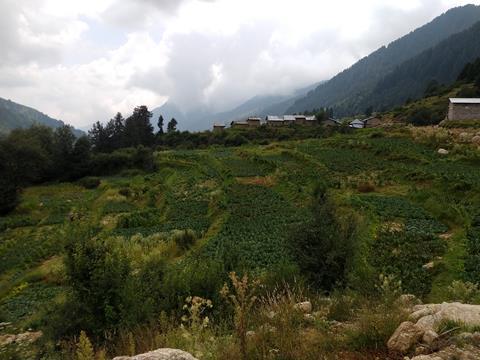
Addressing these challenges requires innovative, sustainable, and context-specific approaches and the application of microbial interventions is one of the promising solutions which can transform agricultural practices in the region. Over the past 50 years, microorganisms have been used in a variety of ways to improve medical advances, food manufacturing, public health, protection of the environment, agricultural biotechnologies, genetic engineering, and the efficient handling of agricultural wastes. Extremophiles are a special group of microorganisms that thrive in harsh environments such as freezing environments, high temperatures, or acidic soils. These resilient microbes hold great potential for sustainable farming, particularly in hilly regions, by enhancing soil health, promoting plant growth, and reducing dependence on chemical fertilizers. Their ability to withstand extreme conditions allows them to play a crucial role in maintaining soil fertility and stability, making them valuable in eco-friendly agricultural practices.
The NE Indian Himalayan region is frequently subjected to various abiotic stresses such as radiation, extreme UV light, cold and subsequent warmth, low pH, heavy metal contamination, erratic rainfall, hyperosmotic pressure, and low nutritional availability. Recent studies have advanced our understanding of various strategies employed by microbes that aid survival against these abiotic stresses. Bacterial strains have demonstrated not only the ability to withstand extreme cold environments but also exhibited enhanced growth alongside the production of cold-active enzymes, which indicates the presence of essential genes involved in biocontrol and contributes to various plant growth-promoting functions. Microbes can play a vital role in mitigating the challenges of acidic soils in the NE Himalayan region. Acid-tolerant microorganisms enhance nutrient availability by solubilizing essential minerals like phosphorus, while mycorrhizal fungi improve root nutrient absorption. Through these interactions, potential microbes can help neutralize soil acidity, supporting healthier plant growth and sustainable agriculture in the region.
Recent developments in microbial research have shown that beneficial microorganisms can play a significant role in improving crop resilience and soil health, thereby lowering reliance on chemical pesticides and fertilizers. Therefore, both culturable and unculturable microbes should be studied and explored, as they possess valuable characteristics that can significantly benefit agriculture. To support the long-term survivability of hill agriculture, this article explores the diversity of microorganisms and their potential to resolve the agricultural challenges faced by the NE Himalayan region.

Unveiling microbial richness in the North East Indian Himalaya: diversity from extreme habitats to agricultural potential
The NE Himalayan region is a haven of diverse landscapes that encompasses many unique and untouched niche ecosystems, such as glaciers, hot springs, sacred groves, organic fields, dense forests, alpine zones, wetlands, and even dumping sites, each fostering distinct microbial communities that are indigenous to their specific environments. These microbes exhibit remarkable adaptations to thrive in extreme environments such as high temperatures, acidic soils, or freezing conditions. From nutrient cycling and organic matter decomposition to promoting plant growth and soil fertility, these microbes play crucial ecological roles. Their diversity and resilience not only help them to sustain themselves in these fragile ecosystems but also hold immense potential for biotechnological applications.
Many of these niche-specific microbes remain unexplored, offering vast scientific potential. The hot springs of the region are rich in thermophilic bacteria that can thrive in high-temperature conditions by producing thermostable enzymes. Caldimonas meghalayensis sp. nov. is a novel thermophilic bacterium reported from the Jakrem hotspring of Meghalaya which produces novel thermostable enzymes essential for surviving in high-temperature conditions. Brevibacillus laterosporus is a potential biocontrol agent that is isolated from a natural hot water spring of Nambar Wild Life Sanctuary of Assam. Other bacterial phyla such as Bacteroidetes, Deinococcus-Thermus, Firmicutes, and Proteobacteria also dominate the hot springs of NE Indian Himalayas.
Cold-adapted psychrophilic and psychrotolerant bacteria are abundant in cold environments such as glaciers and alpine ecosystems of the NE Indian Himalayas because they exhibit remarkable adaptations to survive in extremely cold environments. These cold-loving plant growth-promoting (PGP) bacteria have immense potential for enhancing sustainable agriculture in mountainous regions. The phyla Proteobacteria, Firmicutes, Actinobacteria, and Bacteroidetes have been reported as the most abundant groups of cold-adapted bacteria in the glaciers and alpine zones of the Indian Himalayas. A novel species, Rahnella sikkimica sp. nov., identified in the East Rathong Glacier of West Sikkim is a psychrophilic bacteria that has PGP properties that suggest its role in crop improvement in cold hilly regions. Cold glacier ecosystems of the NE Himalaya provide an ideal reservoir of psychrotrophic PGP bacteria that can be harnessed to promote sustainable agriculture in the region and can be utilized as sources for developing biofertilizers tailored to the challenges of cold climates.

Acidic soils in NE India host acidophilic bacterial phyla including Acidobacteria, Proteobacteria, and Verrucomicrobia along with Pseudomonata and Cyanobacteria essential for nutrient cycling and plant growth in acidic soils. Lesser-known phyla, including Crenarchaeota, Synergistetes, Parvarchaeota, Bacteroidetes, Crenarchaeota, Gemmatimonadetes, Armatimonadetes, Thermi, Elusimicrobia, Euryarchaeota, Fibrobacteres, Chlamydiae, Tenericutes, and Parvarchaeota also thrive in acidic soil, reflecting the region’s immense microbial diversity and potential for sustainable agriculture.
The region is home to numerous sacred groves, which are areas of undisturbed forests conserved by local communities due to religious beliefs. These groves harbor rich biodiversity and serve as habitats for rare, endangered, and endemic species, including a variety of microbial communities which implicates the importance of sacred groves in agriculture. Additionally, the untouched nature of these groves makes them reservoirs of rare and endemic species of beneficial microbes, including PGP and stress-resilient microbes, which can be harnessed through scientific techniques and utilized as biocontrol agents by developing biofertilizers and biopesticides, thereby advancing eco-friendly and sustainable farming practices.
In addition to bacteria, fungi in NE India also thrive in diverse ecosystems, contributing to sustainable agriculture. In high-altitude regions, arbuscular mycorrhizal fungi (AMF) enhance nutrient uptake and drought tolerance, supporting plants under stress. The sacred forests of NE India are also home to a diverse array of fungi, which play a vital role in maintaining ecological balance by forming symbiotic relationships with plants, aiding in nutrient absorption, and enhancing plant growth. These fungi contribute to soil fertility, improve plant resistance to pathogens, and may provide bioactive compounds useful in agriculture, such as natural pesticides. In hot springs, thermotolerant fungi aid in organic matter decomposition and nutrient cycling.
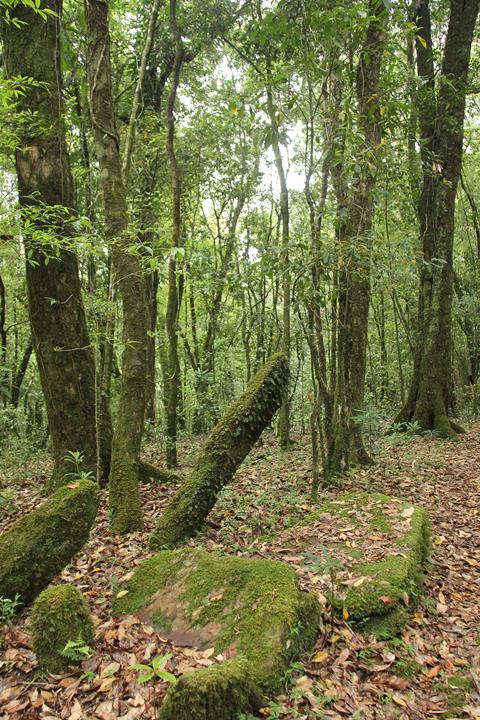
A web-based microbial database, the North East India Microbial Database (NEMiD), has been developed to systematically document the rich microbial diversity of the ecologically significant North-Eastern Himalayan region. This initiative plays a crucial role in understanding and conserving the region’s unique microbial wealth, offering valuable insights with far-reaching implications for agriculture, ecological stability, and sustainable development.
The unculturable majority, residing in diverse and often extreme environments, remains an untapped resource, holding immense potential for advancing sustainable agriculture. Metagenomic study is important because it directly analyzes the genetic material of the microbial communities from environmental samples, unlocking insights into functional genes with plant growth-promoting traits that can enhance crop productivity and resilience. The microbial diversity of various unique ecological habitats of NE Himalaya has been explored using metagenomic analysis. Notable bacterial phyla, including Actinobacteria, Bacteroidetes, Firmicutes, Proteobacteria, Aquificae, Thermotogae, etc., have been reported from environments ranging from glaciers to hot springs of NE Indian states via metagenomic analysis. A specialized database, IHM-DB has been established that integrates data from the entire Himalayan region, encompassing microbes also from the NE Himalayan region, serving as a valuable resource for researchers studying this biodiverse ecosystem. Therefore, a more comprehensive and systematically planned metagenomics study is essential to thoroughly investigate the microbial diversity of the NE Indian Himalaya.
Prospective microbial solutions for sustainable agriculture in the North East Himalayan region
Agriculture in the NE Indian Himalayan region is loaded with challenges that hinder productivity and sustainability. However, recent research reveals microbial solutions that can address these problems. By understanding the role of microbes, we can identify innovative ways to mitigate the impact of these challenges in agriculture.
The cold climate and freezing winters in the NE Himalayas create a harsh environment for agriculture, significantly reducing crop productivity due to low microbial activity and nutrient cycling. Recent research unveiled that cold-tolerant psychrophilic microorganisms can be a promising solution for this problem as they have the ability to thrive in freezing conditions, and possess PGP genes that assist in plant growth even under extreme cold stress. They do this by producing cold-active enzymes that not only help plants to grow but also protect them against phytopathogens in low-temperature conditions. These traits can be harnessed to formulate microbial inoculants that can also be used as biofertilizers and biostimulants for plant growth, and also as biocontrol agents against plant pathogens.
Soil acidity is a serious constraint for crop production in the NE Himalayan region of India. Acidic soil causes a deficiency of essential elements such as calcium, magnesium, phosphorus, boron, and molybdenum which may directly restrict the growth and development of crops. Acid-tolerant microorganisms have the capacity to solubilize nutrients like phosphorus and potassium, improve nitrogen availability through symbiotic nitrogen fixation, and produce phytohormones to stimulate root growth. Therefore, these microbes can be used as biofertilizers for crop improvement. Additionally, formulating microbial consortia from acidophilic bacteria and its direct application on soil can restore soil health, neutralize acidity, and create a more conducive environment for plant growth.

The region’s steep slopes, heavy rainfall, and loose soil structure make it highly susceptible to soil erosion, leading to nutrient loss and disrupted agricultural activities. Moreover, traditional shifting cultivation practices further intensify this problem. Introducing beneficial soil microbes through organic fertilizers can rejuvenate soil health.
Plant-growth-promoting rhizobacteria (PGPR) can play a vital role in enhancing soil health and plant growth through various mechanisms, these include phosphate solubilization, nitrogen fixation, siderophore production, and the production of phytohormones. PGPR can also help plants tolerate diseases, and abiotic stress, and improve nutrient uptake. Additionally, co-inoculation with arbuscular mycorrhizal fungi (AMF) can further enhance plant growth and crop yield, as their hyphal networks bind soil particles, reducing erosion and improving water retention. For instance, incorporating compost enriched with nitrogen-fixing bacteria and mycorrhizal fungi can restore nutrient levels, improve soil structure, and enhance crop productivity, offering a sustainable alternative to shifting cultivation.
The NE Indian Himalayas, with their diverse and unique microbial ecosystems, offer significant potential for sustainable agriculture by harnessing native microbes for biofertilizers. These microbes can reduce the dependency on chemical fertilizers, promoting eco-friendly farming practices, while improving both soil health and crop yields. By sequencing and analyzing the collective genomes of microbial communities, researchers can detect genes responsible for various plant growth-promoting properties such as nitrogen fixation, phosphate solubilization, stress resistance, and the production of plant growth-promoting hormones, all of which enhance plant development and survival in challenging conditions. Such information facilitates the development of biofertilizers and biopesticides, promoting sustainable and eco-friendly agricultural practices.

Microbial interventions for soil health and crop productivity
As the world faces the dual challenges of feeding a growing population and conserving vital environmental resources, microbial interventions are emerging as game-changers for sustainable agriculture. From biofertilizers and biopesticides to microbiome engineering, these innovative microbial applications are transforming farming practices globally, offering eco-friendly solutions to critical agricultural challenges.
Agricultural waste is gaining attention as a cost-effective resource for enriching soil with organic matter and nutrients, supporting sustainable crop production. While raw waste is unsuitable for direct application, composting offers a simple, efficient solution. Compost serves as an excellent carrier for plant-beneficial microbes like PGPR and AMF, transforming agricultural waste into eco-friendly biofertilizers. Enriched with these microorganisms, compost boosts soil fertility and health while reducing reliance on chemical fertilizers. By bioaugmenting compost with microbial strains and nutrients, it becomes a valuable innovation in biofertilizer technology, paving the way for greener and more sustainable agricultural practices. In addition, microbial biostimulants are also being used worldwide to improve crop performance, especially in the face of growing abiotic stresses due to climate change.
Biostimulants work by colonizing plants both epiphytically and endophytically, enhancing plant growth and resilience. To ensure their effectiveness, it is essential for these microbes to establish favorable and lasting colonization, which can be influenced by the plant’s native microbial communities. Additionally, biosurfactants—biomolecules produced by rhizosphere and plant-associated microbes—are being increasingly explored for their role in pathogen control, nutrient bioavailability, and soil remediation. These biomolecules govern plant-microbe interactions by playing key roles in motility, signaling, and biofilm formation. However, to tap into the full potential of biosurfactants, advanced techniques like functional metagenomics are needed to explore novel biosurfactants from uncultured microbes.
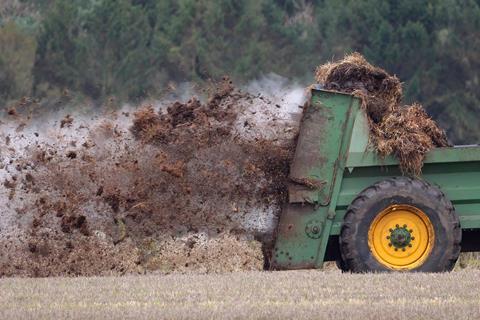
Despite the rapid growth of the bio-inoculant sector, challenges remain regarding the efficacy and performance of these products under field conditions. Seed biopriming—an effective microbial inoculant technique that combines the priming of beneficial microbes on seeds with the hydration of seeds to enhance metabolic activity, holds significant potential to address these limitations. This method improves seed protection against soil-borne pathogens and pollutants like salts and heavy metals, boosts germination rates, and promotes uniform seedling emergence. Further research in agricultural and environmental biotechnology has introduced seed microbiome engineering as an emerging discipline focused on manipulating and optimizing seed-associated microbial communities to enhance plant health, productivity, and resilience, with common techniques including seed coating, soaking, or immersing seedlings in microbial suspensions to establish beneficial microorganisms within the plant microbiome.
In parallel, synthetic biology is a rapidly growing field where new techniques like high throughput sequencing comprising RNA/metagenome/amplicon sequencing, omics-based approaches, and gene editing technologies have remarkably accelerated this area of research. These techniques emphasize three trajectories, which include correlating the phylogeny of the microbes with their function, identifying genes that encode novel enzymes, and conducting bulk sequencing of environmental samples to explore the diversity and potential applications of microbial communities.
Efficient molecular tools such as clustered regularly interspaced short palindromic repeats (CRISPR)-based genome editing offer an ideal platform for studying gene function quickly, by enabling genetic modifications in plants or microbes, boosting crop productivity and disease resistance. CRISPR tools have been successfully applied in gene regulation, chromatin engineering, single-base editing, and epigenetic modifications, with many more advancements expected. Genetically engineered microbial systems (GEMS) and genetically modified organisms (GMOs) are revolutionizing sustainable agriculture by serving as biofertilizers and biopesticides. If effectively harnessed, these cutting-edge technologies have the potential to significantly enhance sustainable agriculture in the NE Himalayan region, offering promising solutions for the unique challenges faced by hill farming communities.

Integrating microbial solutions to build a sustainable future for Himalayan agriculture
The potential of microorganisms to drive sustainable agriculture in the Northeast Himalayas can be fully realized with the support of researchers, agricultural professionals, and local farmers. Comprehensive research is needed to explore the region’s diverse microbial populations and their interactions with plant growth, soil health, and ecosystems. Indigenous microbes, adapted to local soils and climates, could play a crucial role in achieving agricultural sustainability by improving productivity and resilience in these fragile hill ecosystems.
Global advancements in microbial technologies, such as synthetic biology, gene editing, and whole-genome synthesis, are transforming agriculture by enhancing productivity and sustainability. These innovations could significantly benefit the NE Himalayas, offering new opportunities for crop improvement. However, understanding plant-microbe interactions through functional markers, rather than taxonomic ones, is essential to optimizing microbial inoculants. Real-time monitoring tools can further enhance their effectiveness in improving soil health, nutrient uptake, and reducing abiotic and biotic stresses.
Moreover, developing microbial products containing multiple strains with complementary functions, such as biocontrol and plant growth promotion, could lead to synergistic benefits for crop health. While these approaches hold promise, understanding the ecological dynamics of microbial communities, including competition and symbiosis, is vital for ensuring long-term sustainability.
Technologies like genomics, metagenomics, and artificial intelligence are unlocking new strategies for optimizing microbial interventions. By integrating these advancements with local agricultural practices, the NE Himalayas can achieve a sustainable and resilient agricultural future, boosting food security while maintaining ecological balance. Coordination between academia, industry, farmers, and policymakers will be key to realizing this potential.
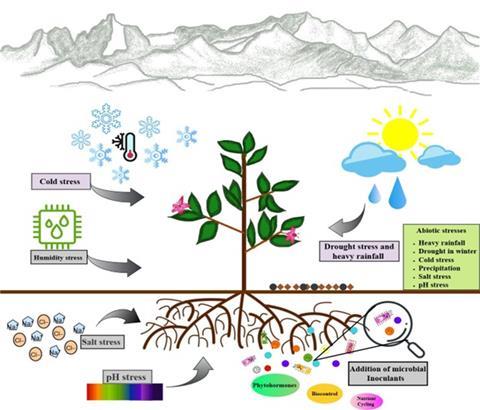


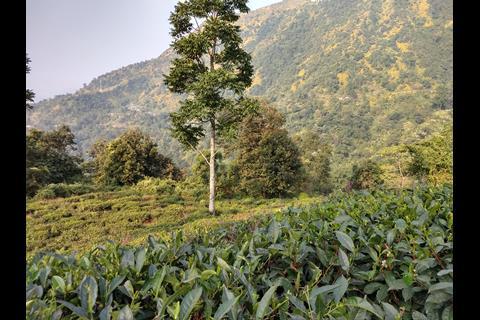

















No comments yet